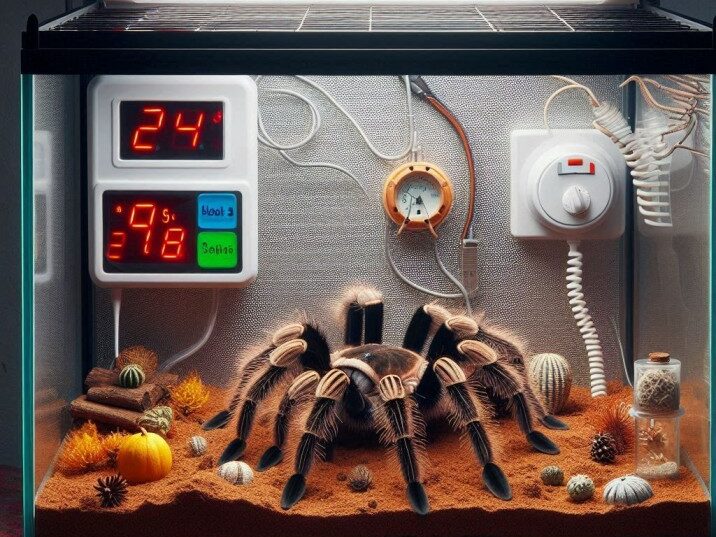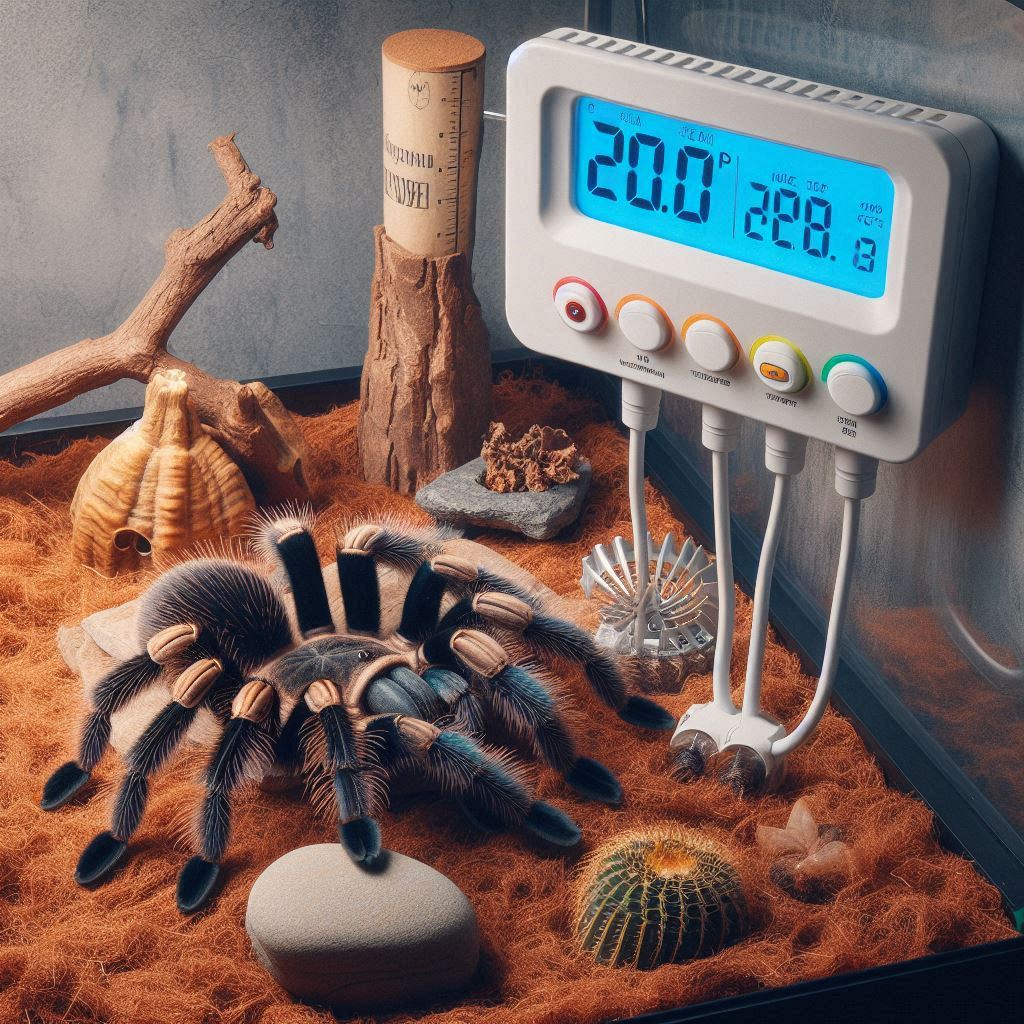Introduction
Table of Contents
Tarantulas are fascinating creatures, often admired for their striking appearance and unique behaviors. For those interested in keeping these arachnids as pets, understanding the ideal temperature does a tarantula need is crucial. Proper temperature regulation ensures the tarantula’s health, activity levels, and overall well-being. In this article, we’ll explore what temperature a tarantula needs, how to maintain it, and why it’s essential for their survival. Let’s dive into the world of tarantula care!

Why Temperature Matters for Tarantulas
Tarantulas are ectothermic, meaning they rely on external sources to regulate their body temperature. Unlike mammals, they cannot generate their own heat. This dependency makes it vital for tarantula owners to provide a habitat with the correct temperature range to mimic their natural environment.
Optimal Temperature Range for Tarantulas
Different species of tarantulas have varying temperature needs based on their natural habitats. However, a general guideline for most common pet tarantulas is as follows:
| Tarantula Species | Ideal Temperature Range (°F) | Habitat Type |
|---|---|---|
| Gooty Sapphire Tarantula | 75-85 | Tropical forests |
| Pumpkin Patch Tarantula | 70-80 | Rainforests |
| Brazilian Salmon Pink Bird-Eating Tarantula | 75-85 | Tropical regions |
| Rose Hair Tarantula | 70-80 | Deserts and scrublands |
Temperature Does a Tarantula Need
Gooty Sapphire Tarantula
- Ideal Temperature: 75-85°F
- Habitat: Tropical forests
- Details: Gooty Sapphire Tarantulas thrive in warm, humid environments. Maintaining a stable temperature within this range is essential to replicate their natural habitat and promote healthy behavior.
Pumpkin Patch Tarantula
Temperature does a tarantula need is:
- Ideal Temperature: 70-80°F
- Habitat: Rainforests
- Details: These tarantulas prefer slightly cooler temperatures compared to other species. Ensuring the enclosure stays within this range helps them stay active and reduces stress.
Brazilian Salmon Pink Bird-Eating Tarantula
- Ideal Temperature: 75-85°F
- Habitat: Tropical regions
- Details: Known for their large size, these tarantulas need a warm environment to support their growth and metabolism. A consistent temperature is key to their well-being.
Rose Hair Tarantula
Temperature does a tarantula need is:
- Ideal Temperature: 70-80°F
- Habitat: Deserts and scrublands
- Details: Rose Hair Tarantulas are adaptable and can tolerate a range of temperatures. However, keeping them within the recommended range ensures they remain comfortable and healthy.
How to Maintain the Right Temperature
Using Heating Devices
To maintain the proper temperature, various heating devices can be used in a tarantula enclosure:
- Heat Mats: Placed under or on the side of the enclosure to provide consistent warmth.
- Ceramic Heat Emitters: These devices emit heat without light, perfect for maintaining temperature without disturbing the tarantula’s natural light cycle.
- Thermostats: Essential for regulating the temperature, preventing overheating, and maintaining a stable environment.
Monitoring Temperature
Regularly checking the temperature inside the enclosure is crucial. Use reliable thermometers placed at different points within the habitat to ensure even heat distribution.
Humidity and Temperature Balance
In addition to temperature, maintaining proper humidity levels is vital for a tarantula’s health. Different species have varying humidity requirements, often linked to their temperature needs. For instance, tropical species like the Gooty Sapphire Tarantula require higher humidity levels (70-80%) along with their warm temperatures.
The Impact of Incorrect Temperature
Failing to maintain the appropriate temperature can lead to several health issues for tarantulas:
- Hypothermia: If the temperature is too low, tarantulas may become lethargic and less responsive.
- Dehydration: High temperatures without adequate humidity can lead to dehydration.
- Stress and Health Problems: Inconsistent temperatures can cause stress, making tarantulas more susceptible to infections and other health issues.
Seasonal Temperature Adjustments
In their natural habitats, tarantulas experience seasonal temperature changes. Mimicking these variations can be beneficial for some species. For example, slightly lowering the temperature during the winter months can simulate natural conditions, promoting healthier molting cycles.
Conclusion
Maintaining the correct temperature is essential for the health and well-being of tarantulas. By understanding their specific needs and using the right equipment, you can create a comfortable and safe environment for these incredible creatures. Whether you’re a beginner or an experienced tarantula keeper, paying attention to temperature is a crucial aspect of tarantula care.
FAQs about Temperature Does a Tarantula Need
1. What happens if the temperature is too low for my tarantula? Low temperatures can make tarantulas lethargic and less responsive. It can also slow their metabolism and lead to health problems.
2. Can I use a regular light bulb to heat my tarantula’s enclosure? Regular light bulbs are not ideal as they can create uneven heating and disturb the tarantula’s natural light cycle. Use heat mats or ceramic heat emitters instead.
3. How often should I check the temperature in my tarantula’s enclosure? It’s best to check the temperature daily to ensure it remains within the optimal range for your tarantula species.
4. Do all tarantulas need the same temperature? No, different species have different temperature requirements based on their natural habitats. Always research your specific tarantula’s needs.
5. Can tarantulas survive outside their ideal temperature range? While tarantulas can tolerate slight variations, prolonged exposure to incorrect temperatures can lead to stress and health issues.

